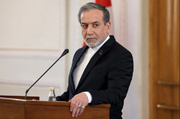“Representatives of the British Museum will hand over the replica to me during an exhibition the museum is scheduled to hold in India in the upcoming days,” Mohammdreza Kargar told the Persian service of ISNA.
Kargar said that he will take the replica to Iran and then, after a team of Iranian experts provide a plan and the necessary information for the installation of the cylinder, send it on to The Hague.
The British Museum loaned the cylinder to Iran for an exhibition, which was held at the National Museum of Iran from September 12, 2010 to January 10, 2011.
The artifact was last displayed in Iran 40 years ago before that date.
The clay cylinder was discovered in 1879 by the Assyro-British archaeologist Hormuz Rassam in the foundations of the Esagila, the main temple of Babylon. It was transferred to the British Museum, where it was reinforced in order to increase its resistance to erosion.
Considered the world’s first declaration of human rights, the Cyrus Cylinder is a document issued by the Persian king Cyrus the Great in the form of a clay cylinder inscribed in Akkadian cuneiform script.
The cylinder was created following the Persian conquest of Babylon in 539 BC, when Cyrus overthrew the Babylonian king Nabonidus and replaced him as ruler, ending the Neo-Babylonian Empire.
The text of the cylinder denounces Nabonidus as impious and portrays the victorious Cyrus as pleasing to the chief Babylonian god Marduk.
It goes on to describe how Cyrus had improved the lives of the citizens of Babylonia, repatriated displaced peoples and restored temples and cult sanctuaries.
MMS/YAW
MNA
MNA
END























Your Comment